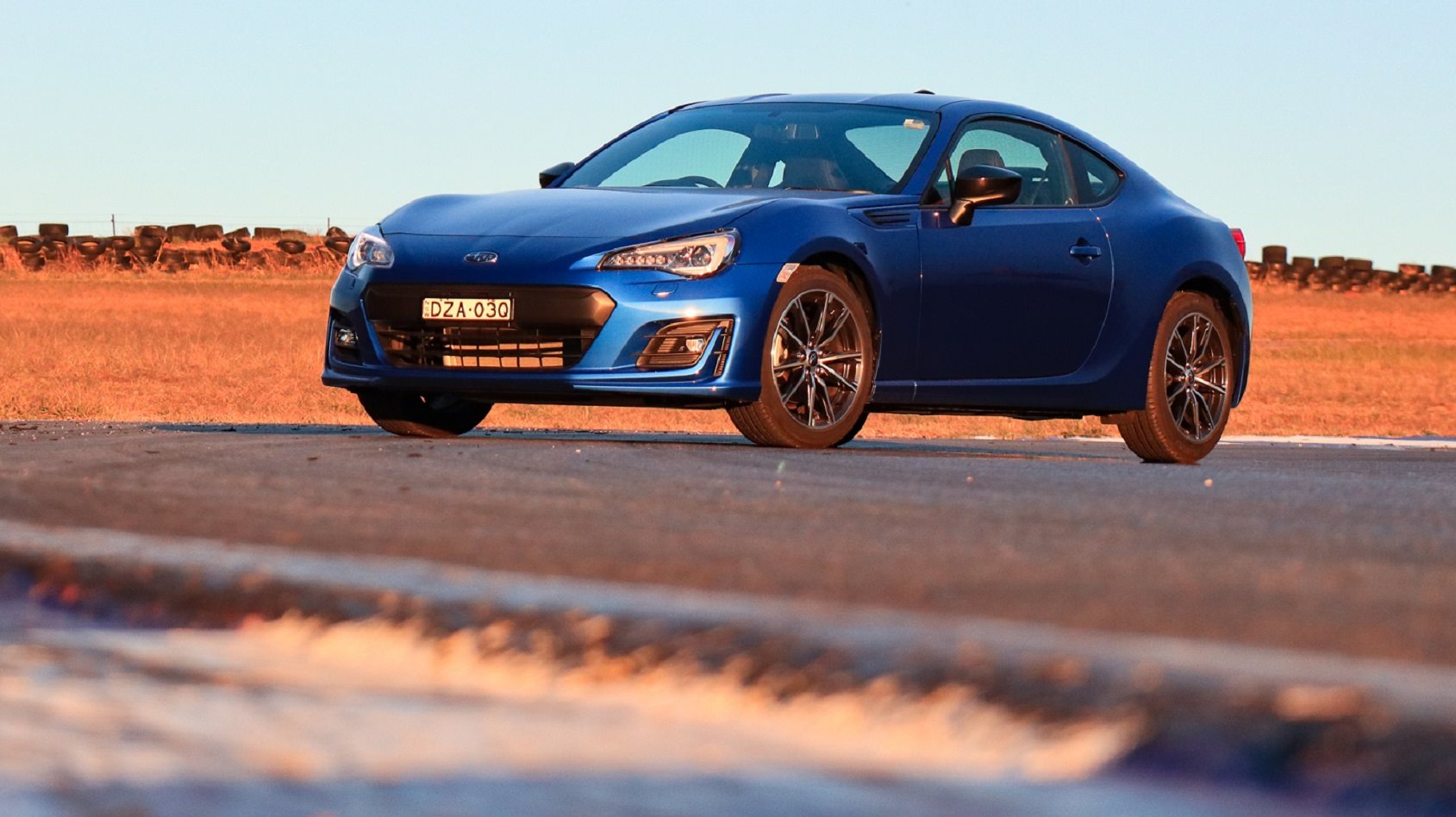
Introduction

Seven years on, and Subaru’s much heralded little sports car, the BRZ, hasn’t really changed. Like, at all. Same flat-four engine, same rear-wheel-drive layout, same 2+2 seating layout.
At the time the BRZ – and its twin, the Toyota 86 – was a shot in the arm for affordable, entertaining cars, but the game has moved on in seven years. How has the BRZ held up?
Style
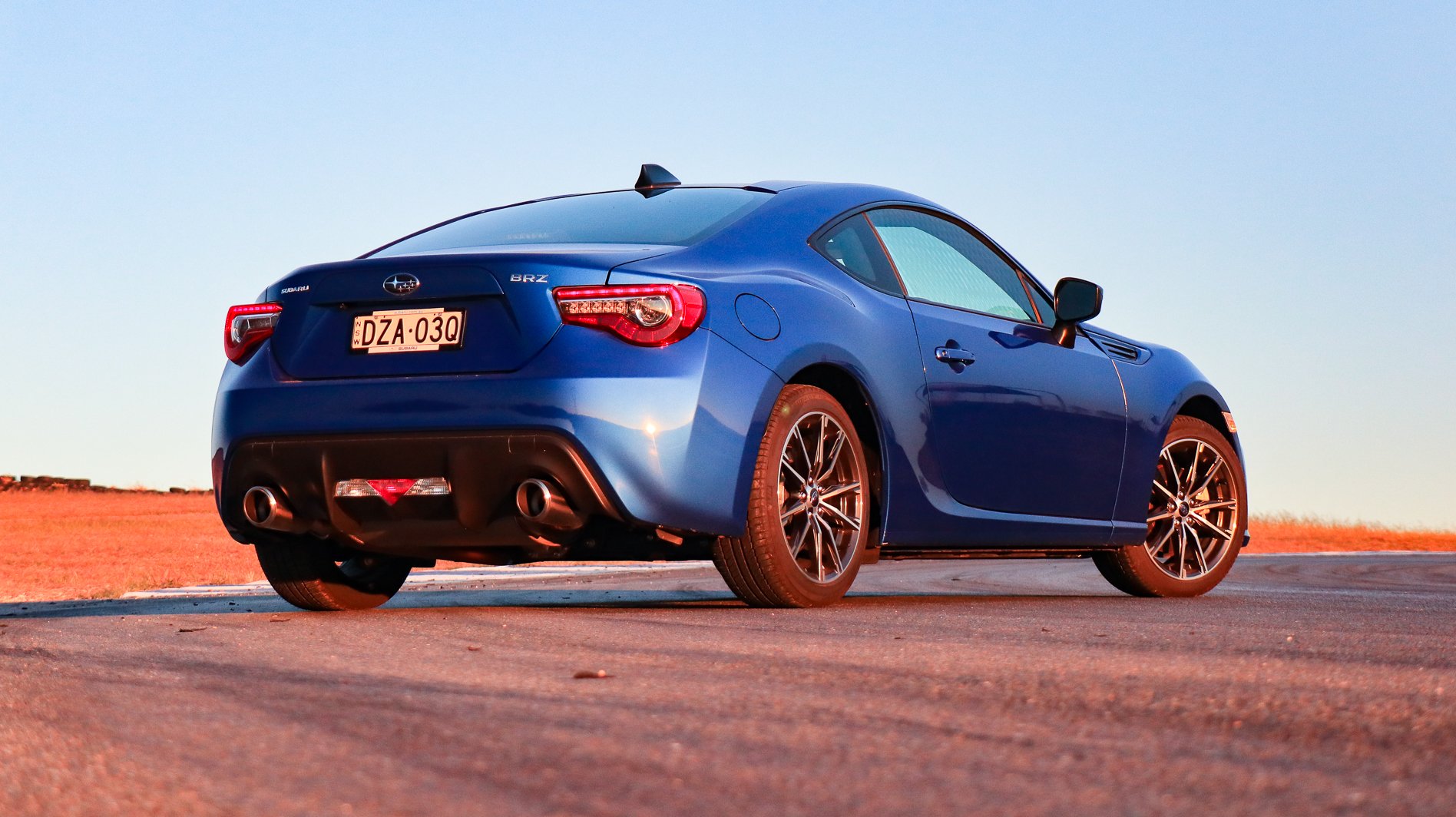
The low-slung, rear-wheel-drive two-door Subaru coupe’s form has been squared up and modernised over the years, with the latest iteration wearing a sharper, more macho front bar and LED lighting front and rear.
It still looks underdone in the wheel and tyre department thanks to those slightly anaemic 17-inch jobs, though, while the stock ride height doesn’t do it any favours.
It does, however, still turn head despite its relative age, which is not something many cars of a similar vintage can claim.
Inside, it’s pretty sombre, with the reams of grey and black broken up by red contrasting stitching. It’s nice to see the sports-fitting seats still offer the unusual reversible headrest, which is designed to accommodate helmet wearers more comfortably.
There is a splash of colour under the bonnet for the anoraks – the engine’s top-mounted manifold piping has been sprayed bright red, but only in manual gearbox-equipped cars.
Price and value
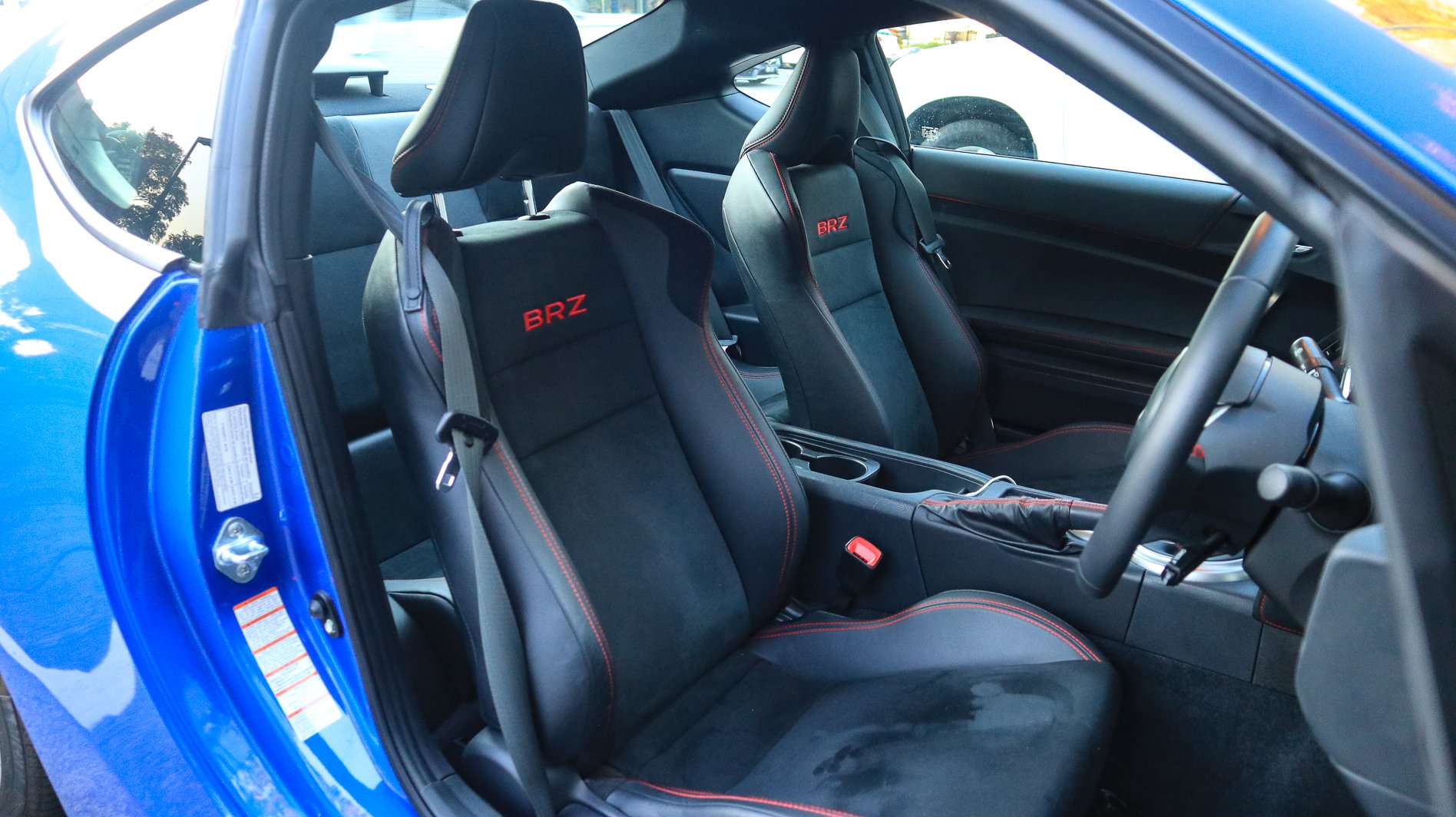
This is the BRZ Premium, which costs $36,030. It sits over the top of the base BRZ, which comes in at $34,520. The only thing it has over the top of the stocker, though, is leather and Alcantara suede trim for the seats, as well as butt heaters.
There’s also a tS model for $40,434, which gains Sachs suspension, Michelin tyres on 18-inch rims and Brembo brakes.
The BRZ is pretty well equipped, with LED foglights and headlights, LED taillights, keyless entry and pushbutton start, automatic lights and wipers, a compact multimedia system with Apple CarPlay and Android Auto and the aforementioned heated front seats.
A Styling Pack adds side skirts and a spoiler, a Driver’s Pack lowers and stiffens the car for more stability, while an S Pack gets you black Enkei alloy wheels and a red engine-start button.
Its age – and its small frontal area, apparently –means that while it gets switchable traction and stability controls, it’ll never get driver aids like AEB and adaptive cruise control.
Rivals include – naturally – the Toyota 86, but its pricing and power outputs put it in the competitive set of warm hatches like the Hyundai i30 N-Line.
Size
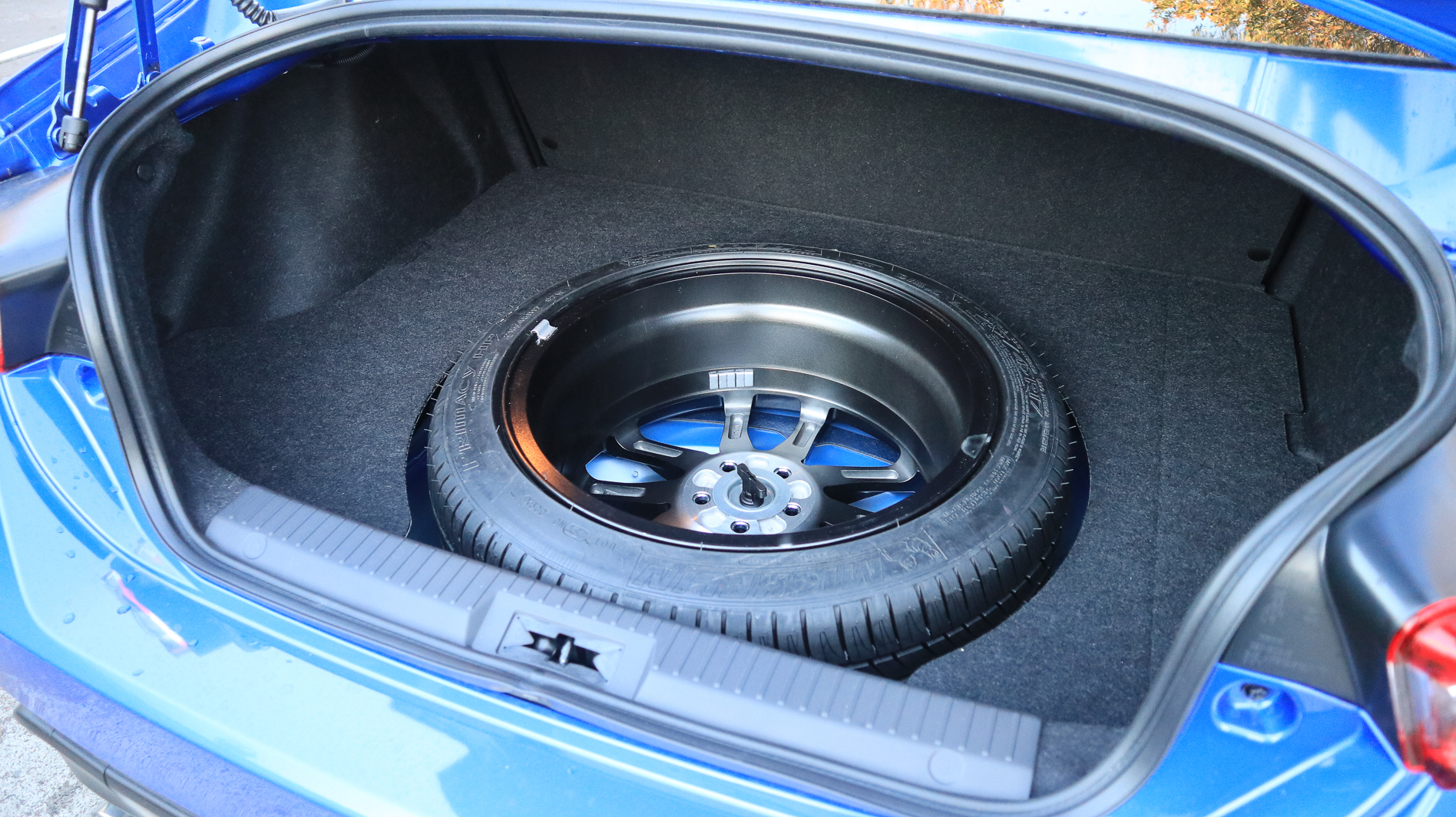
The key fact to understand about the diminutive BRZ is that it has the lowest hip point – the point at where your hips are lowest, you won’t be surprised to learn – in the entire Subaru (and Toyota) line-up. This isn’t an easy car to lower yourself into gracefully.
It’s a nick over 4.2m long and it’s about 1.77m wide, and just 1.32m high. Boot space is a tiny 218 litres, but you can drop the back seats and gain enough space to carry four wheels and tyres… for when you go to the race track, see?
The rear seats exist in name only. It’s super awkward to access them, and even putting kids in the back is a trial, given how much you need to stoop.
Safety
Even though the BRZ lacks more modern safety tech like lane departure warning and autonomous emergency braking, it still holds an ANCAP score of five from five stars.
It boasts seven airbags, including a driver’s knee bag and curtain bags along its length.
Warranty and running costs
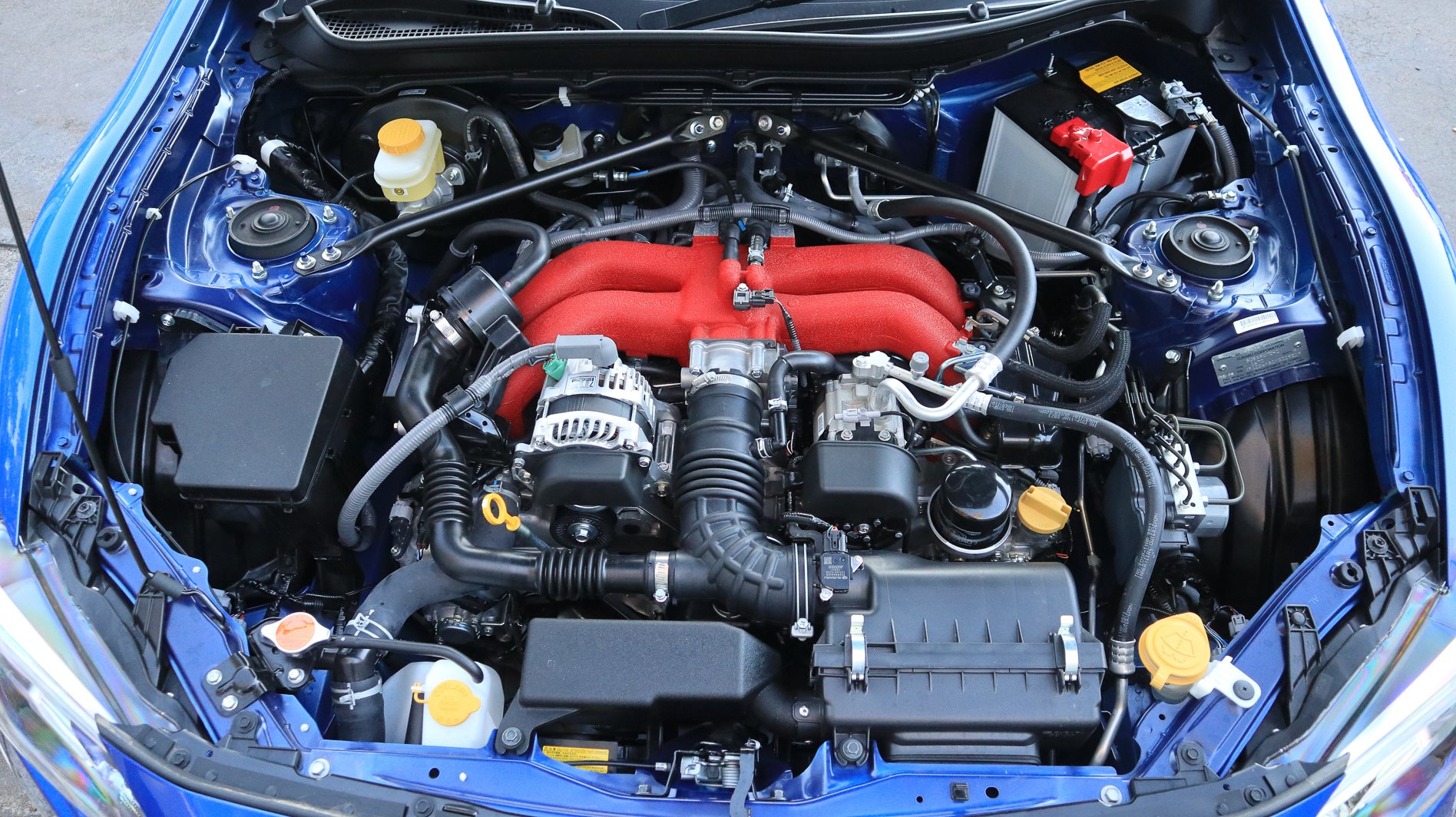
Subaru recently switched to a five-year/unlimited kilometre offer across its fleet, BRZ included. It also offers a fixed-price service regime. Subaru specifies 15,000km or (unusually) nine-month intervals for servicing, and the first four will cost you around $224 each.
The fifth jumps a little to around $362, while the 90,000km service tops $1070. The last one comes at 63 months or 130,000km and costs around $972.
Its 50-litre fuel tank needs 98 octane, despite the engine having no turbocharger, which pushes the price of a tank to around the $65-70 mark.
Our testing returned 9.2L/100km on the combined fuel economy cycle after a good 650km on board, against Subaru’s claim of 8.4L/100km.
Our best from a tankful of juice was 554km, with probably 20km of potential range left… but it was a long walk back to a service station if we got that stat wrong.
Comfort
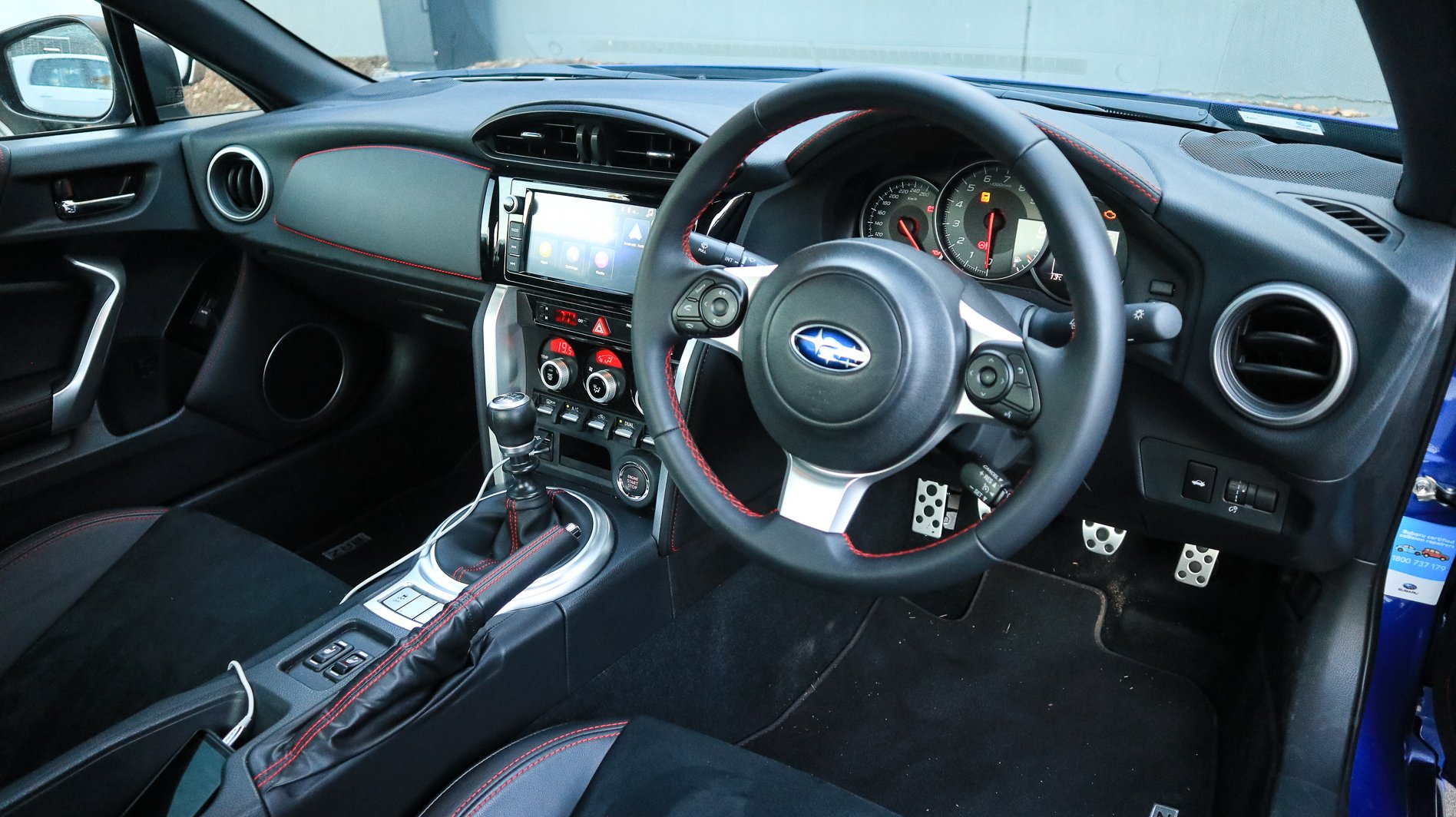
Let’s focus up front because the only thing that’s comfortable in the back is your backpack. The leather/suede front buckets are firm but well-shaped and accommodate even more husky gentlemen with ease.
The quality of the seats along with the included seat heaters in the Premium is, in my opinion, worth the cost of entry, lifting the cabin comfort of the BRZ from okay to good.
It’s a tiny workspace, so everything falls easily to hand, but it’s a little underdone for storage; a lid on the centre console bin would be a good addition, for example.
The small multimedia screen works well enough; we tested it with Android Auto as opposed to our usual Apple CarPlay and found ourselves needing to revert to Bluetooth connectivity for a reliable connection over the test. It worked, but it wasn’t straightforward.
But the BRZ is more about the interaction between hands, feet and eyes, and the BRZ’s small, chunky wheel, perfectly place pedals and compact gear shifter are a tactile delight.
On the road
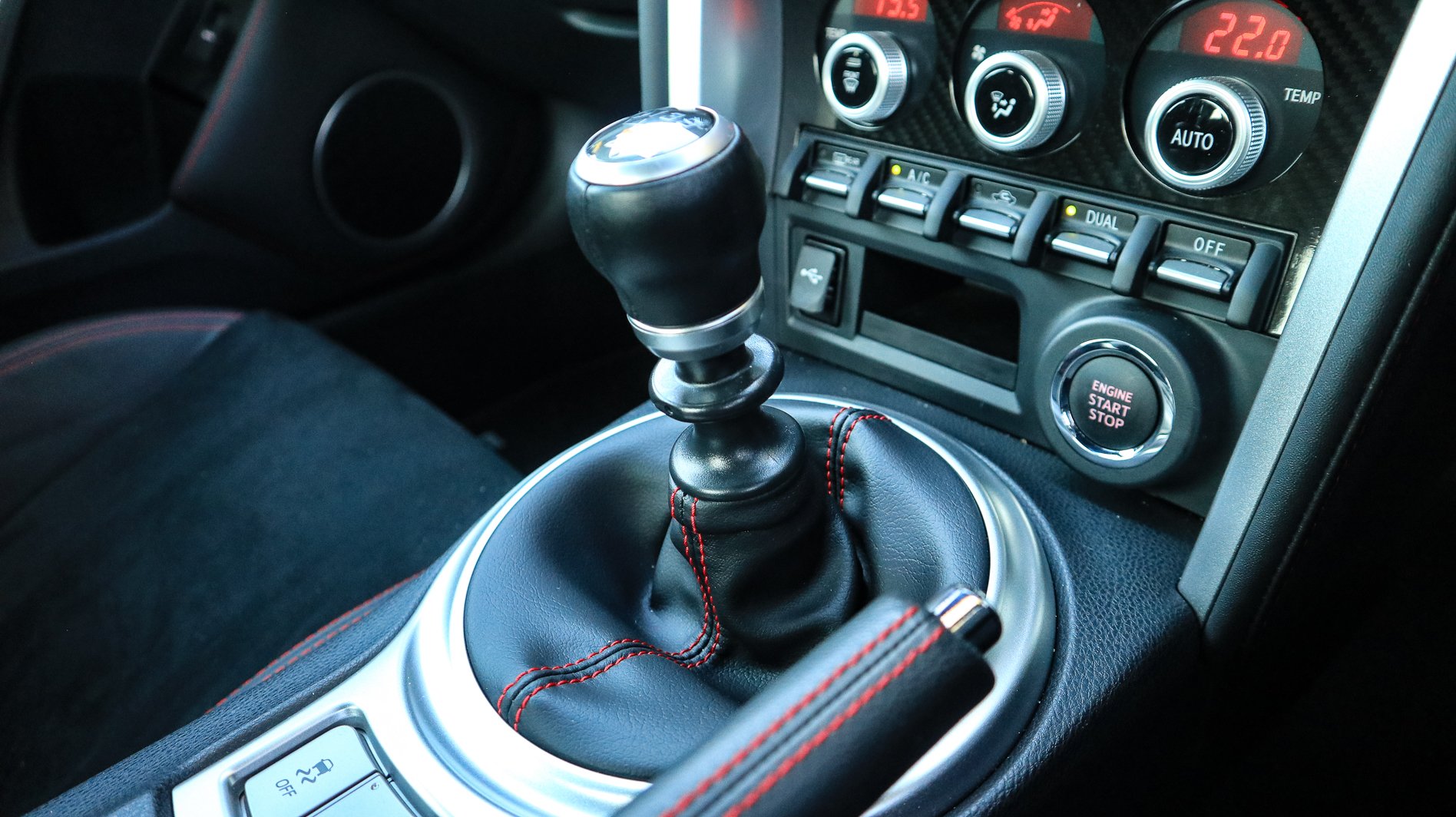
In a world of SUVs and dual cabs, you feel pretty invisible aboard the BRZ at times. The clutch action takes a little dialling in but is fine to use even in traffic, while the 2.0-litre flat-four cylinder petrol engine is tractable across the rev range.
With just 152kW and 212Nm on board to push around 1242kg, the BRZ isn’t slow, as such, but it does need encouragement to get its groove on and send sufficient propulsion to those rear wheels
The suspension tune is perfectly placed between the realms of comfort and precision, with a lovely, compliant feeling off the top of the stroke that helps absorb city lumps and bumps.
It uses that compliance to key itself into the road surface when you turn up the wick, too, with the fly-by-wire throttle and electrically-assisted steering not betraying the BRZ’s faithful feeling at the wheel. The low-grip Michelin Primacy tyres are the limiting factor, but it all plays nicely together.
However, we’d resist the urge to add grip via rubber without firming up the suspension; something the more expensive BRZ tS does perfectly with its Sachs dampers, bigger Brembo brakes and Pilot Sport 4 rubber.
No adaptive cruise or AEB makes the BRZ slightly less user-friendly than, say, an Impreza as a daily commuter, but it’s still quite capable.
Air induction noise is quite prominent at higher revs and there is some road rumble on the highway, but at lower speeds, it’s surprisingly quiet.
The BRZ still offers enough of a sense of occasion, even after seven years, to overcome those shortfalls, anyway.
The small capacity engine is adequate, but we’ve long suggested that a mild turbo system would really bring the BRZ alive, and the quality of the chassis would support such an endeavour. Indeed, the original brief for the 86/BRZ duo was to serve as a platform for modification.
Verdict
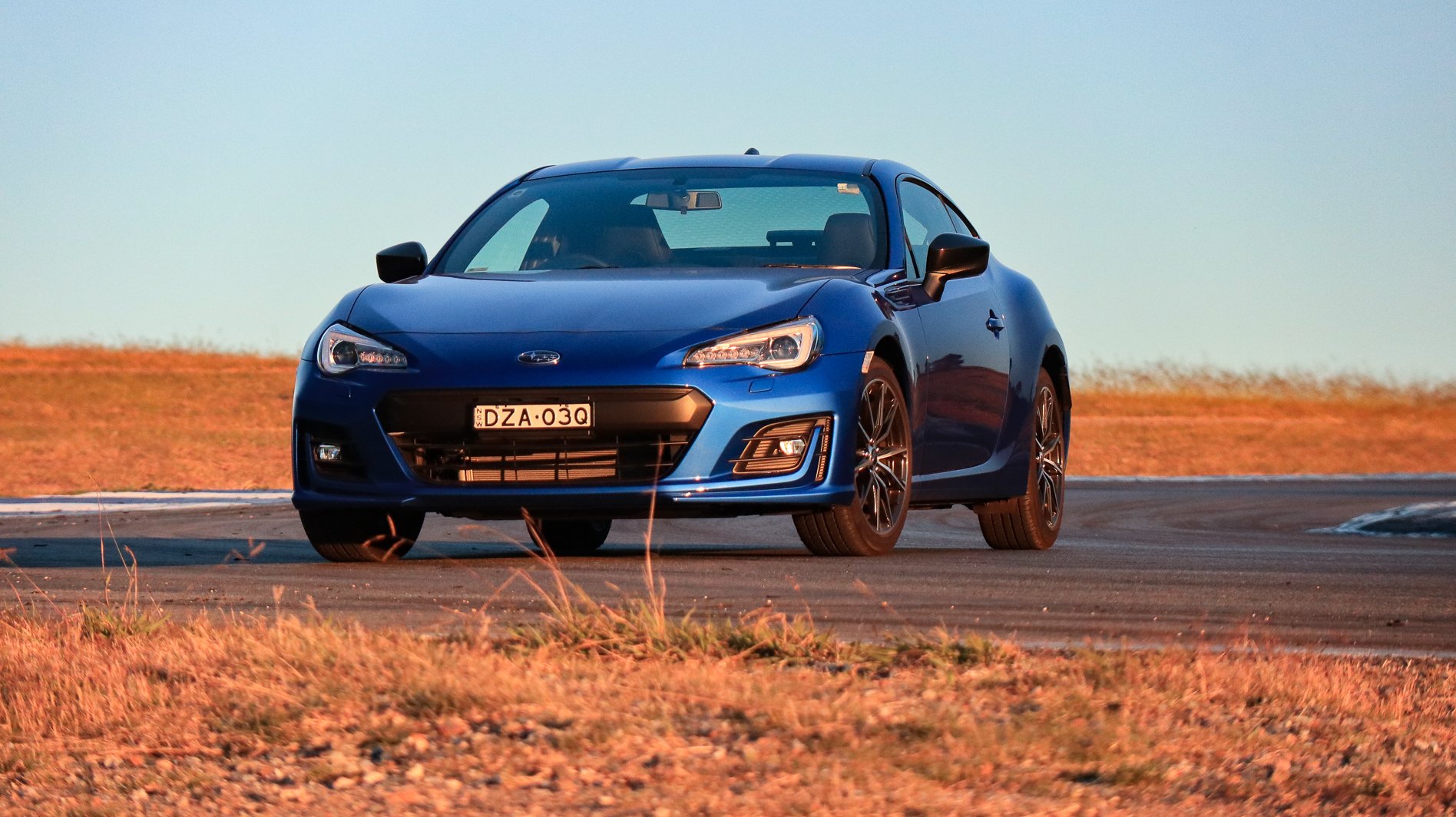
The BRZ sits oddly but comfortably within Subaru’s all-wheel-drive fleet, quietly selling in half-decent numbers to a surprisingly wide audience. It’s special without being overbearing, and entertaining without being difficult to access. It’s affordable, too, and resales are still pretty sharp.
It may also be an endangered species, with Subaru admitting there is no visibility on a replacement on the horizon.
If you’re on the fence about getting one, I wouldn’t dally – the Subaru BRZ is one of the last of the affordable rear-drive sports cars, and it’ll attain cult status in generations to come – for good reason.
Model: Subaru BRZ Premium Engine: 1998cc flat 4cyl, dohc, 16v Max power: 152kw @ 7000rpm Max torque: 212Nm @ 6400-6800rpm Transmission: 6-speed manual Weight: 1242kg 0–100km/h: 7.6sec Economy: 8.4L/100km Price: $34,520



